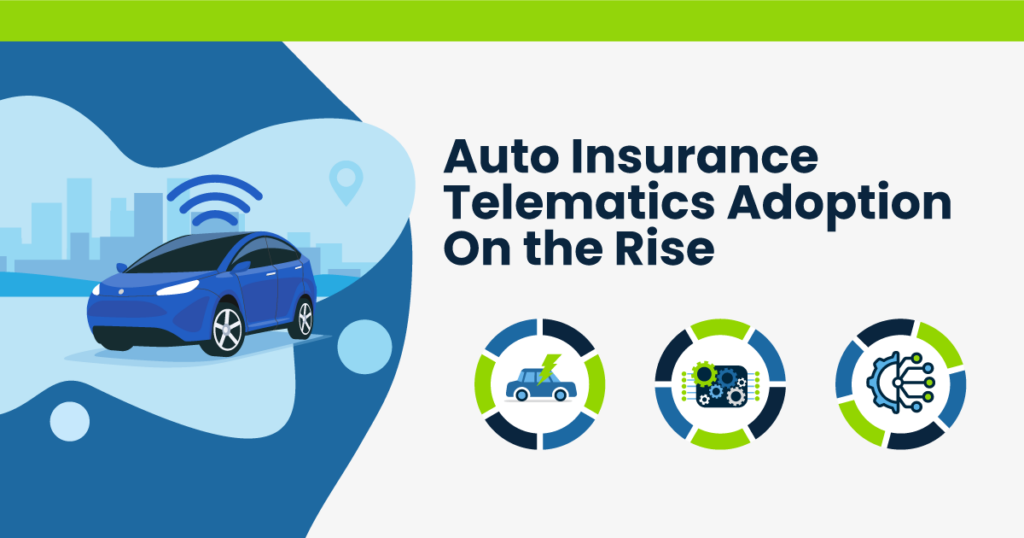In recent years, telematics has emerged as a game-changer in the auto insurance industry, offering a new way for drivers to potentially save money on their insurance premiums. By using telematics technology to monitor driving behavior, insurers can offer personalized premiums based on how safely a person drives. This shift from traditional rating factors like age, gender, and location to data-driven, behavior-based pricing represents a significant evolution in the way auto insurance is priced and delivered. This article explores how telematics works, its benefits, and the impact it could have on both drivers and the insurance industry.
What Is Telematics?
Telematics refers to the integration of telecommunications and information processing systems within vehicles, typically through a device installed in the car or via a smartphone app. These systems collect and transmit data about the vehicle’s operation and the driver’s behavior in real-time. Common data points gathered through telematics include:
- Speed: How fast the vehicle is traveling at any given time.
- Braking Patterns: The frequency and intensity of braking.
- Acceleration: How quickly the vehicle accelerates.
- Cornering: The sharpness and speed of turns.
- Mileage: The total distance driven.
- Time of Day: When the vehicle is being driven, with certain times considered riskier than others.
This data is then analyzed by insurance companies to assess the risk associated with insuring a particular driver. Based on this analysis, insurers can offer premiums that more accurately reflect the driver’s actual behavior, potentially leading to significant savings for those who exhibit safe driving habits.
How Telematics Can Save You Money
The primary advantage of telematics-based insurance, often referred to as usage-based insurance (UBI) or pay-as-you-drive insurance, is the potential for cost savings. Here’s how it can help drivers lower their premiums:
1. Rewarding Safe Driving
Telematics allows insurers to identify and reward safe driving behavior. For example, drivers who consistently follow speed limits, avoid harsh braking, and maintain a safe distance from other vehicles are seen as lower risk. As a result, these drivers may qualify for discounts on their premiums, sometimes up to 30% or more, depending on the insurer and the individual’s driving habits.
2. Personalized Premiums
Traditional auto insurance relies on broad categories to determine premiums, such as age, gender, and driving history. While these factors can indicate risk to some extent, they do not account for the nuances of individual driving behavior. Telematics enables insurers to offer personalized premiums based on actual driving data, making the pricing process fairer and more accurate. This means that if you drive less or more carefully than the average person in your demographic, you could see substantial savings.
3. Pay-As-You-Drive Models
Telematics also supports pay-as-you-drive (PAYD) insurance models, where premiums are directly linked to the amount of driving you do. For infrequent drivers, this can lead to significant savings compared to traditional policies that assume a standard amount of driving. PAYD models are particularly appealing for people who use their cars primarily for short commutes or occasional trips.
Additional Benefits of Telematics
Beyond potential cost savings, telematics offers several other benefits that can enhance the driving experience and promote safer roads.
1. Enhanced Safety Features
Many telematics systems come equipped with additional safety features, such as real-time feedback on driving behavior, emergency assistance in the event of an accident, and vehicle diagnostics. For instance, some systems can alert drivers if they are driving too fast or braking too hard, helping them to adjust their behavior in real time and reduce the risk of accidents.
2. Accident Reconstruction and Claims Processing
In the event of an accident, telematics data can be invaluable in reconstructing the incident and determining fault. This can lead to faster and more accurate claims processing, reducing the time and stress involved in settling a claim. The detailed data provided by telematics can also help prevent fraudulent claims, which in turn can help keep insurance costs lower for everyone.
3. Eco-Friendly Driving
Telematics can encourage more fuel-efficient driving practices by monitoring and providing feedback on behaviors like excessive idling or aggressive acceleration. Drivers who adopt these practices not only save money on fuel but also reduce their carbon footprint, contributing to environmental sustainability.

Privacy Concerns and Data Security
While the benefits of telematics are clear, there are also important considerations regarding privacy and data security. Because telematics involves the collection of detailed information about an individual’s driving habits, concerns about how this data is used and protected are legitimate.
1. Data Usage and Sharing
Drivers need to be aware of what data is being collected, how it is being used, and with whom it may be shared. Insurers typically use this data solely for assessing risk and determining premiums, but there are concerns about the potential for misuse, such as selling data to third parties or using it to monitor non-driving-related activities.
2. Consent and Transparency
Most telematics programs require drivers to consent to data collection, but it’s crucial that this consent is informed. Insurers should be transparent about what data is being collected, how it will be used, and what measures are in place to protect it. Drivers should carefully review the terms and conditions before enrolling in a telematics-based insurance program.
3. Security Measures
To address data security concerns, insurers must implement robust cybersecurity measures to protect the data from breaches or unauthorized access. This includes encryption, secure storage solutions, and regular audits to ensure compliance with data protection standards.
The Future of Telematics in Auto Insurance
As telematics technology continues to advance, its role in the auto insurance industry is likely to expand. Here are some potential future developments:
1. Integration with Autonomous Vehicles
As autonomous vehicles become more common, telematics will play a crucial role in monitoring their performance and ensuring safe operation. Insurance models will need to adapt to account for the reduced risk associated with self-driving cars, potentially leading to even lower premiums for those who adopt this technology.
2. Expansion into New Markets
Telematics-based insurance is currently most popular in the U.S. and Europe, but it is expected to expand into other markets as the technology becomes more accessible and affordable. Emerging economies with growing automotive markets may particularly benefit from the adoption of telematics, as it can provide a more equitable and data-driven approach to insurance pricing.
3. Increased Customization and Flexibility
Future telematics programs may offer even more customization, allowing drivers to choose specific coverage options based on their driving data. This could include options like mile-based coverage, seasonal insurance, or policies that adjust in real-time based on changing driving habits.
Conclusion
Telematics represents a significant shift in the way auto insurance is priced and delivered, offering a more personalized and data-driven approach that rewards safe driving and can lead to substantial savings. While there are valid concerns about privacy and data security, the potential benefits of telematics, including enhanced safety features, more accurate claims processing, and the promotion of eco-friendly driving practices, make it an attractive option for many drivers. As technology continues to evolve, telematics is poised to play an even more central role in the auto insurance industry, helping to create a safer and more efficient future for all drivers.

